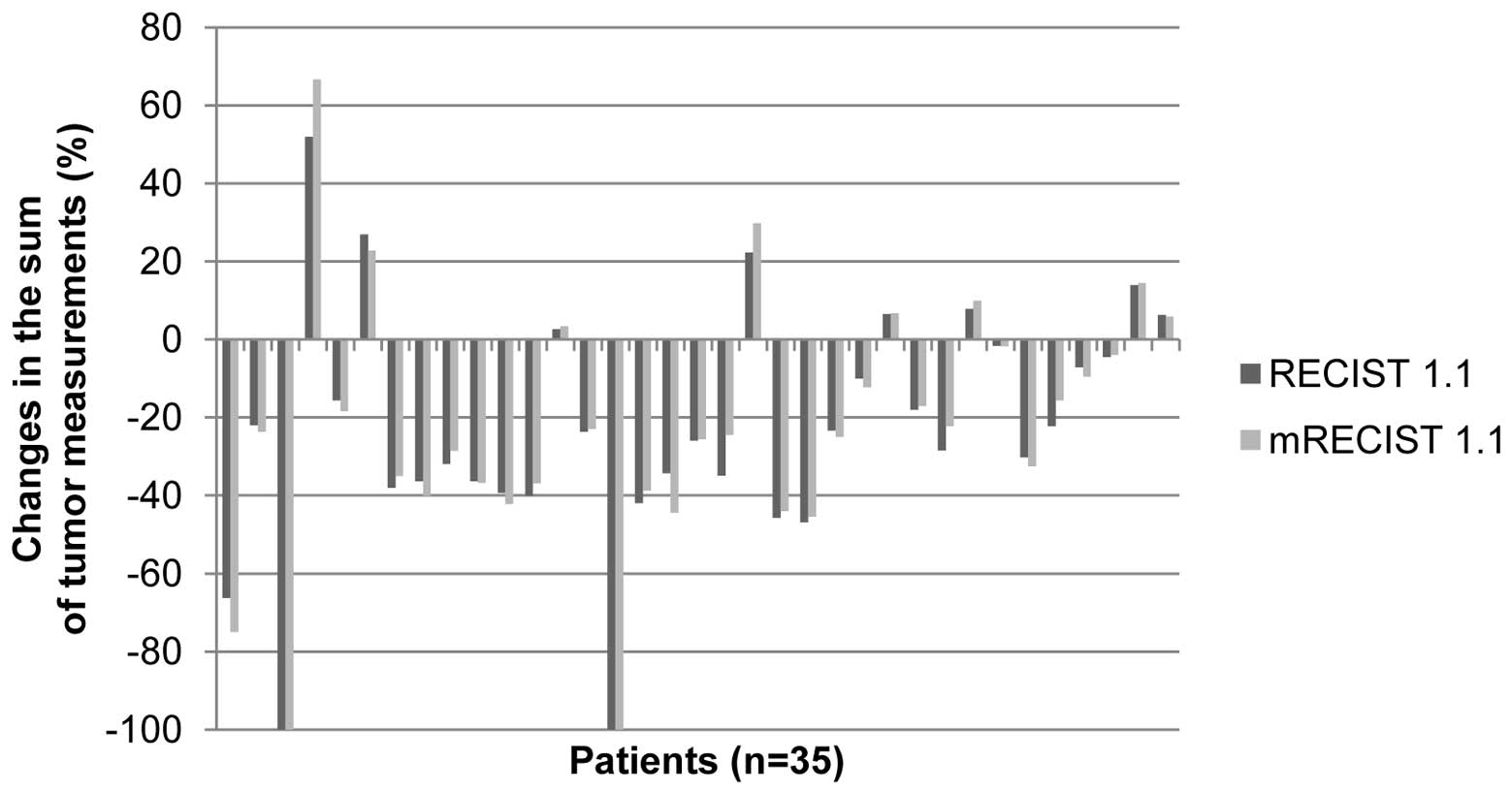|
1
|
Miller AB, Hoogstraten B, Staquet M and
Winkler A: Reporting results of cancer treatment. Cancer.
47:207–214. 1981.
|
|
2
|
Therasse P: Measuring the clinical
response. What does it mean? Eur J Cancer. 38:1817–1823. 2002.
|
|
3
|
Therasse P, Arbuck SG, Eisenhauer EA, et
al: New guidelines to evaluate the response to treatment in solid
tumors. European Organization for Research and Treatment of Cancer,
National Cancer Institute of the United States, National Cancer
Institute of Canada. J Natl Cancer Inst. 92:205–216. 2000.
|
|
4
|
Sargent DJ, Rubinstein L, Schwartz L, et
al: Validation of novel imaging methodologies for use as cancer
clinical trial end-points. Eur J Cancer. 45:290–299. 2009.
|
|
5
|
Eisenhauer EA, Therasse P, Bogaerts J, et
al: New response evaluation criteria in solid tumours: revised
RECIST guideline (version1.1). Eur J Cancer. 45:228–247. 2009.
|
|
6
|
Bogaerts J, Ford R, Sargent D, et al;
RECIST Working Party. Individual patient data analysis to assess
modifications to the RECIST criteria. Eur J Cancer. 45:248–260.
2009.
|
|
7
|
Schwartz LH, Bogaerts J, Ford R, et al:
Evaluation of lymph nodes with RECIST 1.1. Eur J Cancer.
45:261–267. 2009.
|
|
8
|
Dancey JE, Dodd LE, Ford R, et al:
Recommendations for the assessment of progression in randomized
cancer treatment trials. Eur J Cancer. 45:281–289. 2009.
|
|
9
|
Moskowitz CS, Jia X, Schwartz LH and Gönen
M: A simulation study to evaluate the impact of the number of
lesions measured on response assessment. Eur J Cancer. 45:300–310.
2009.
|
|
10
|
Schwartz LH, Mazumdar M, Brown W, et al:
Variability in response assessment in solid tumors: effect of
number of lesions chosen for measurement. Clin Cancer Res.
9:4318–4323. 2003.
|
|
11
|
Zacharia TT, Saini S, Halpern EF and
Sumner JE: CT of colon cancer metastases to the liver using
modified RECIST criteria: determining the ideal number of target
lesions to measure. AJR Am J Roentgenol. 186:1067–1070. 2006.
|
|
12
|
Sun JM, Ahn MJ, Park MJ, et al: Accuracy
of RECIST 1.1 for non-small cell lung cancer treated with EGFR
tyrosine kinase inhibitors. Lung Cancer. 69:105–109. 2010.
|
|
13
|
Nishino M, Jackman DM, Hatabu H, et al:
New Response Evaluation Criteria in Solid Tumors (RECIST)
guidelines for advanced non-small cell lung cancer: comparison with
original RECIST and impact on assessment of tumor response to
targeted therapy. AJR Am J Roentgenol. 195:W221–W228. 2010.
|
|
14
|
Fuse N, Nagahisa-Oku E, Doi T, et al:
Effect of RECIST revision on classification of target lesions and
overall response in advanced gastric cancer patients. Gastric
Cancer. 16:324–328. 2013.
|
|
15
|
Jang GS, Kim MJ, Ha HI, et al: Comparison
of RECIST version 1.0 and 1.1 in assessment of tumor response by
computed tomography in advanced gastric cancer. Chin J Cancer Res.
25:689–694. 2013.
|
|
16
|
Jang HJ, Kim BC, Kim HS, et al: Comparison
of RECIST 1.0 and RECIST 1.1 on computed tomography in patients
with metastatic colorectal cancer. Oncology. 86:117–121. 2014.
|















